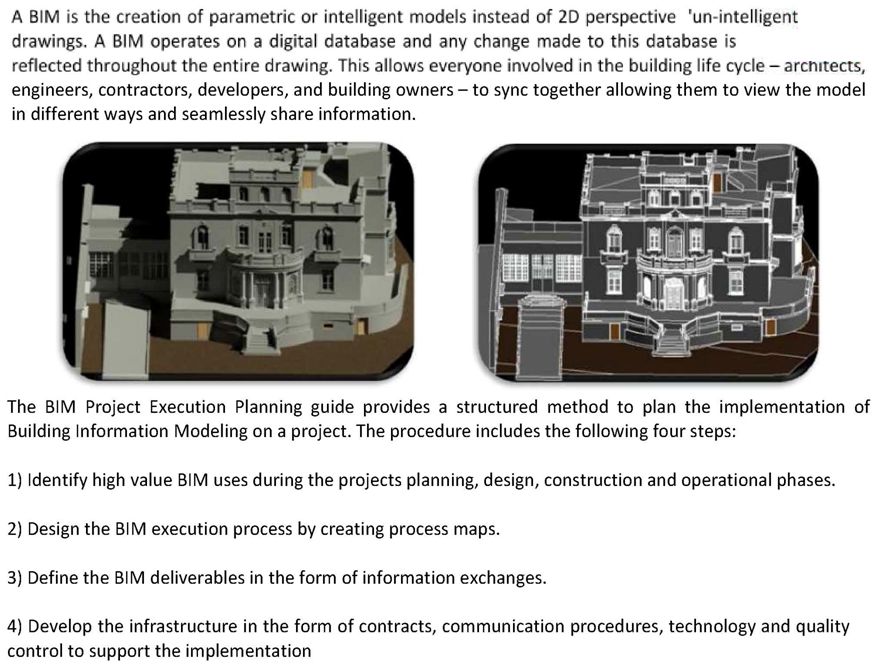BIM- Building Information Modeling

Building information modeling (BIM) is a process for electronically designing and experimenting with a building’s features and how they function before construction begins. Computer-aided design is commonly used to draft a static set of plans for a construction project, with a different model for each view.
Building information modeling (BIM) is a process involving the generation and management of digital representations of physical and functional characteristics of places. Building information models (BIMs) are files (often but not always in proprietary formats and containing proprietary data) which can be extracted, exchanged or networked to support decision-making regarding a building or other built asset. Current BIM software is used by individuals, businesses and government agencies who plan, design, construct, operate and maintain diverse physical infrastructures, such as water, refuse, electricity, gas, communication utilities, roads, bridges, ports, tunnels, etc.
BIM involves representing a design as combinations of “objects” – vague and undefined, generic or product-specific, solid shapes or void-space oriented (like the shape of a room), that carry their geometry, relations and attributes. BIM design tools allow extraction of different views from a building model for drawing production and other uses. These different views are automatically consistent, being based on a single definition of each object instance. BIM software also defines objects parametrically; that is, the objects are defined as parameters and relations to other objects, so that if a related object is amended, dependent ones will automatically also change. Each model element can carry attributes for selecting and ordering them automatically, providing cost estimates as well as material tracking and ordering.
For the professionals involved in a project, BIM enables a virtual information model to be handed from the design team (architects, landscape architects, surveyors, civil, structural and building services engineers, etc.) to the main contractor and subcontractors and then on to the owner/operator; each professional adds discipline-specific data to the single shared model. This reduces information losses that traditionally occurred when a new team takes ‘ownership’ of the project, and provides more extensive information to owners of complex structures.
Building information models span the whole concept-to-occupation time-span. To ensure efficient management of information processes throughout this span, a BIM manager (also sometimes defined as a virtual design-to-construction, VDC, project manager – VDCPM) might be appointed. The BIM manager is retained by a design build team on the client’s behalf from the pre-design phase onwards to develop and to track the object-oriented BIM against predicted and measured performance objectives, supporting multi-disciplinary building information models that drive analysis, schedules, take-off and logistics. Companies are also now considering developing BIMs in various levels of detail, since depending on the application of BIM, more or less detail is needed, and there is varying modeling effort associated with generating building information models at different levels of detail.

// Drop us a line! We are here to answer your questions 24/7